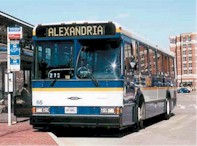In a trend that bodes well for the future of America’s core urban jurisdictions, the white people living in central cities are wealthier on average than their suburban counterparts — and the city/suburb wealth gap is actually widening. That’s the conclusion of University of Virginia scholars William H. Lucy and David L. Phillips in their latest research, “Whites Lead Cities’ Income Revival 2000 to 2005.”
The situation is different for African-Americans who, as they increasingly enter the middle class, are moving into the suburbs, and for Hispanics, who are swelling the ranks of the poor through massive immigration.
Write the authors: “This finding reverses the standard belief that most middle and upper-income whites had left cities before 2000 and that white middle and upper income newcomers usually choose suburbs over cities, leaving mainly low and moderate income whites in cities.” The finding also confirms the oft-state contention of fellow Bacon’s Rebellion columnist Ed Risse that Americans with greater financial resources, who enjoy wider latitude in the places they can afford to live, have demonstrated through their decisions in the marketplace that they prefer more compact human settlement patterns.
A driving force in rising city incomes in recent years, say Lucy and Phillips, is the surge in condominium construction. “We believe the condominium construction has contributed to relative income increases in cities, especially for young professionals and middle-aged and elderly empty nesters.”
Note: The authors are tracking per capita income, not household income. Because central cities contain disproportionate numbers of single people, average household incomes may be lower even if per capita incomes are higher.




